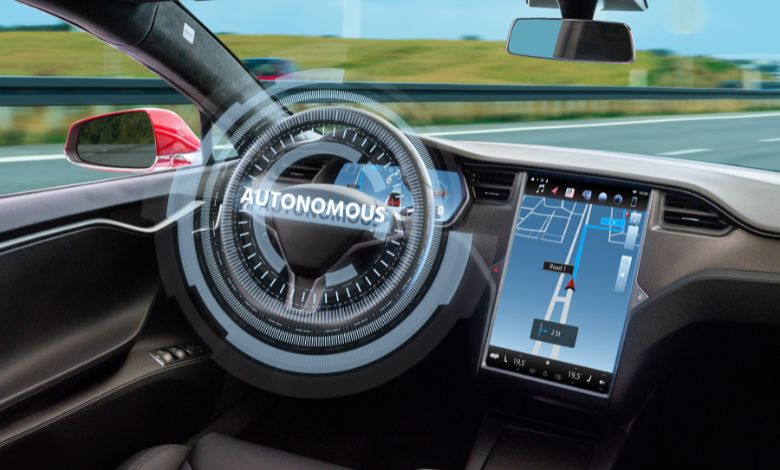
Elon Musk Signals Tesla Reaching Limits of HW3 Self-Driving Computer
Elon Musk signals Tesla reaching limits of HW3 self-driving computer, hinting at future upgrades for full autonomy.
Over the years, Tesla has set the agenda and pushed the limits when it comes to autonomous driving tech. Recently, Elon Musk sent shock waves when he alluded to the idea that Tesla’s latest autonomous operation computer—Hardware 3 (HW3)—was reaching its limits. If you’re like me, one being amazed by the innovations from Tesla (and maybe even daydreaming about checking out Tesla cars for sale yourself), this is interesting and slightly troubling. How will this influence the future of Tesla’s Full Self-Driving (FSD) initiative? And perhaps even more pertinent, how will this influence the greater autonomous vehicle vision? Let’s explore this topic and discover the implications.
Is Tesla’s HW3 Reaching Its Limits? Expert Insights

Tesla’s Full Self-Driving (FSD) technology has been evolving rapidly, but recent statements from Elon Musk suggest that Hardware 3 (HW3) may be reaching its limits. As Tesla continues to push the boundaries of autonomous driving, the need for more advanced computing power becomes evident.
The discussion around HW3’s capabilities has sparked debates among Tesla enthusiasts and experts. In the screenshot below, an industry observer shares insights on whether Tesla can achieve full self-driving with HW3 or if future upgrades, like HW4, will be necessary.
Check out the perspective below:

A Quick Summary: An Overview Of HW3 And Why It Is Important
First, let’s establish HW3 for those not caught up on Tesla terminology. HW3, short for Hardware 3, is Tesla’s internal computer architecture upon which its Full Self-Driving capability is based. HW3 arrived in 2019 and broke the paradigm by ditching third-party processors (NVIDIA being one example) and instead constructing its own bespoke-made hardware, from the beginning designed for real-time operation using neural nets.
Think of HW3 as the brain for Tesla’s autonomous platform. HW3 processes inputs from the cameras, the radar, the ultrasonic sensors, and the like, making split-second decisions—driving the roads, seeing things, avoiding accidents. HW3 has for some time now set the standard for Tesla’s autonomous initiative.
But here’s the catch: technology changes quickly. Cutting-edge tech from 2019 could be outdated by 2025. To make this understandable, consider the scenario where you own the latest smartphone, only for the operating system and the applications you run them on to become progressively more heavy-hitting. This is the predicament Tesla is in when it comes to HW3. As elon musk signals tesla reaching limits of hw3 self-driving computer, it’s clear that change is on the horizon.
Elon Musk’s Admission: HW3 Is Reaching its Limit
In a recent announcement, elon musk signals tesla reaching limits of hw3 self-driving computer, admitting that HW3 is not likely sufficient to usher Tesla’s holy grail: Level 5 autonomy, where cars can drive under all scenarios independently, without the owner’s intervention. To set the context, Tesla’s FSD Beta can now handle complex city streets and high-speed highway driving—Level 5 autonomy is far more complex.
The issue is not HW3 being dangerous or incapable for ordinary circumstances. It is the horsepower load for next-generation FSD computer software. Tesla’s neural networks become increasingly complex, and the horsepower required is greater for larger data sets and edge cases (i.e., variable circumstances such as work zones, erratic walkers, or inclement weather). That elon musk signals tesla reaching limits of hw3 self-driving computer underscores how next-level autonomy demands better hardware.
Why This Is Important (And Why We Care)
At first sight, the announcement by Musk appears to be a reversal. But actually, it is a testimony to the progress being made by Tesla.
When HW3 arrived in 2019, the idea was to handle the autonomous demands of the day. Tesla’s engineers designed the ability for handling enormous amounts of real-time data, and the company has made some amazing milestones for autonomous driving. But the FSD software for Tesla evolves, and its hardware requirements follow. It’s only natural—just like the latest games will run best on the latest computer graphics card or gaming computer.
As elon musk signals tesla reaching limits of hw3 self-driving computer, it’s only logical that Tesla is now focusing on building the next level: Hardware 4 (HW4).
What’s Next? Enter HW4
Elon Musk has confirmed the work being performed by Tesla on HW4, the one that will debut in newer models like the much-touted Cybertruck. HW4 will likely include:
- Greater processing capacity: To handle larger complex data sets and networks.
- Improved energy efficiency: High efficiency attained without draining the car’s battery.
- Enhanced redundancy: For added security and reliability for mission-critical applications.
If HW3 is upgrading from the smartphone from the flip phone, HW4 will be upgrading from the latest smartphone to the latest flagship. Elon musk signals tesla reaching limits of hw3 self-driving computer, but HW4 will address these challenges head-on, ensuring Tesla’s future ambitions remain intact.
What Does This Mean for Existing Tesla Owners?
If you happen to possess one of the HW3 cars, you can’t help but ask yourself: Is this obsolete for my car?
Tesla has also previously given its customers access to hardware upgrades. For example, when HW3 arrived, Tesla gave HW2-equipped car buyers the option for upgrading their hardware for free when the FSD package had been bought. Whether HW4 will also give HW3 buyers the option for upgrading is unknown officially. However, as elon musk signals tesla reaching limits of hw3 self-driving computer, it’s reasonable to expect Tesla will make some form of upgrading available.
Even without the upgrade, HW3 cars will run and will continue to be supported by ongoing software updates for many years. It is similar to possessing an outdated smartphone that is continually updated—it is not the latest, but far from obsolete.
The Broader Implications for Autonomous Driving
Tesla’s challenges with HW3 illustrate the essential truth about autonomous tech: it’s extremely hard.
Reaching true Level 5 autonomous operation requires solving endless edge cases—those rare but inevitable scenarios one can’t afford to ignore. For example:
- How does the car handle sudden dangers like a child unexpectedly rushing onto the street?
- Can it cope with poorly marked work zones containing unreadable signs?
- What happens when the weather involves very heavy rain or snow?
These challenges need not only complex software, but also strong hardware. Elon musk signals tesla reaching limits of hw3 self-driving computer, but Tesla’s incremental approach—one small step for its tech, repeated over and over again—is one of the prime reasons the company is the leader.
Why I’m Optimistic About Tesla’s Future
Despite these challenges, however, I remain optimistic about the chances for Tesla’s success. History has proved that Tesla is best when under seemingly impossible circumstances.
Consider Autopilot, the innovative (though not yet complete) driver-assist tech rolled out all the way back in 2014. Since its debut, Tesla has continually refined it through over-the-air software updates, adding features and fine-tuning its operation. Autopilot and FSD Beta are now light-years ahead of where they started.
The same will apply for HW4 and future iterations of the hardware. Elon musk signals tesla reaching limits of hw3 self-driving computer, but Tesla’s commitment to relentless improvement guarantees that they will continue pushing the boundaries for autonomous tech.
Relatable Analogy: The Evolution of Technology
To put this into context, consider the history of the smartphone. That very first iPhone from 2007 was revolutionary, but by the standards of the day, it seems laughably underpowered. But without the very first iPhone, we wouldn’t even have the slim, high-power devices we now use. HW3 is the same—not the finish line, but the steppingstone. In pushing HW3 to its limits, Tesla has paved the way for HW4 and beyond. That is the nature of tech progress: one incremental improvement after the next.
Key Takings:
- Elon musk signals tesla reaching limits of hw3 self-driving computer, but this is not defeat. Instead, it’s the inevitable progression towards the autonomous cars of Tesla’s future.
- As the expectations for autonomous tech rise, the supporting hardware must also expand. For Tesla enthusiasts and owners, the future is bright.
- Whether HW4, HW5, or something entirely unique, Tesla’s commitment to innovation ensures the ride towards complete autonomy will be one worth following.
- So, what’s your take? Are you psyched about Tesla’s next-gen hardware? Is full autonomy something far into the future? Let’s start the conversation—I’d love your opinions!
Additional Resources:
- Elon Musk Finally Admits That Tesla Will Have to Replace Its HW3 Self-Driving Computers:This article from Electrek details Elon Musk’s acknowledgment that HW3 will need to be replaced to meet Tesla’s self-driving goals. He mentions that while the process will be challenging, Tesla is committed to making the necessary upgrades.
- Musk Confirms Tesla Will Upgrade HW3 Vehicles for Free:Not a Tesla App reports that Tesla plans to upgrade HW3 vehicles at no cost for owners who purchased the Full Self-Driving package. This move aims to equip vehicles with the necessary hardware to achieve unsupervised full self-driving capabilities.
- Elon Musk Admits Teslas Will Need New Hardware for FSD:The Verge highlights Elon Musk’s statement that HW3 computers will require replacement to support full self-driving features. This admission underscores the limitations of the current hardware in meeting Tesla’s autonomous driving objectives.
Tesla to Upgrade HW3 Computers for FSD Owners:Drive Tesla Canada discusses Tesla’s commitment to upgrading HW3 computers for Full Self-Driving package owners. Elon Musk acknowledges that the process will be complex and challenging but necessary to fulfill Tesla’s self-driving promises.



